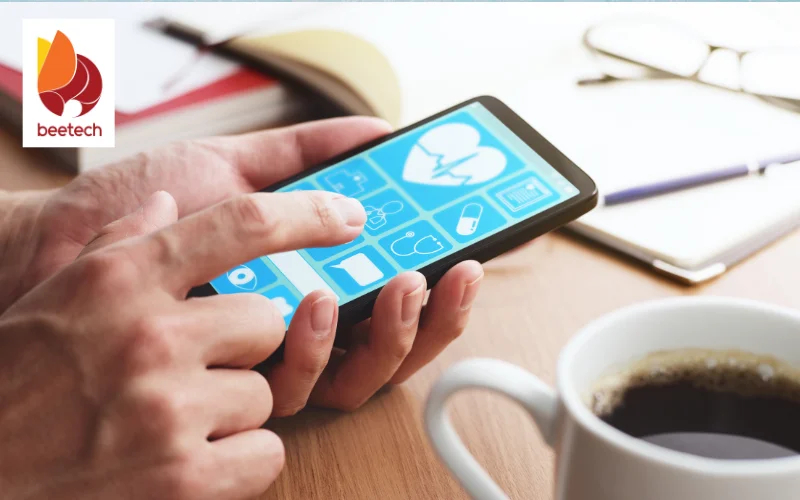Pharmacy app development: How to build a successful app
In an era of booming digital technology, developing a pharmacy app from A to Z is not just a trend; it’s an optimal solution to enhance operational efficiency and meet customer demands. So, what exactly is a pharmacy app? How can you build a professional one? This article provides a detailed roadmap, from ideation to deployment, along with practical insights to get started today.

1. What is a pharmacy app and why develop one?
A pharmacy app is a software or digital platform designed to manage pharmacy operations, such as inventory tracking, sales processing, health consultations, and even online payments. It’s not just a tool for pharmacy owners - it’s a bridge that allows customers to access services quickly and conveniently.
So, why invest in pharmacy app development? In a competitive market where traditional pharmacies face e-commerce challenges, an app streamlines workflows, reduces errors, increases revenue, and improves customer experience. If you want your pharmacy to stay ahead and align with modern trends, now is the time to act.
2. Basic steps to develop a pharmacy app from A to Z
Building a pharmacy app from scratch requires a structured approach. Here are the key steps:
2.1. Research and ideation
Start by identifying the real needs of your pharmacy and its customers. Do you want an app for inventory management, online sales, or pharmacist consultations? Research the market, analyze competitors, and explore pharmaceutical tech trends to shape a clear vision.
2.2. Designing the interface and user experience (UI/UX)
A user-friendly interface is critical to attracting and retaining users. For instance, an easy-to-navigate medicine catalog, an intuitive shopping cart, or a clear transaction history can make the app efficient for both staff and customers. Prioritize a simple yet functional design.
2.3. Choosing technology and development
Depending on your budget and goals, opt for technologies like Flutter or React Native (for cross-platform development) or native coding for iOS/Android. Don’t forget to integrate APIs for drug databases, online payments, and advanced features.
2.4. Testing and deployment
Once developed, the app must undergo thorough testing to identify bugs and optimize performance. After final refinements, launch it on Google Play or the App Store, ready to serve your customers.

3. Must-have features in a pharmacy app
A professional pharmacy app should include essential features to meet practical needs. Here are some key suggestions:
Inventory management: Track stock levels, get alerts for expiring or low-stock items.
Online sales: Enable customers to order medicines via the app with home delivery.
Health consultations: Integrate AI chatbots or direct pharmacist connections for customer support.
Revenue reports: Provide daily, weekly, or monthly sales analytics for easy monitoring.
These features streamline operations, attract users, and give your pharmacy a competitive edge.
>>> Read more: 12 important attentions before business IT outsourcing
4. Benefits and challenges of pharmacy app development
4.1. Benefits for businesses and customers
Investing in a pharmacy app delivers tangible value:
For businesses: Automates inventory and sales processes, reduces errors, and increases revenue through online channels.
For customers: Saves time, offers transparent pricing, and ensures clear product information.
For example, a pharmacy with an online app could see a 20-30% revenue boost by reaching remote customers, especially during pandemics or when in-person visits aren’t feasible.
4.2. Challenges and Solutions
Development isn’t always smooth sailing. Common challenges include:
High costs: Outsource development or use open-source tools to cut expenses.
Legal compliance: Ensure prescription-only drugs follow regulations—consult legal experts to mitigate risks.
Data security: Protect customer and prescription data with encryption like SSL or blockchain.
By anticipating and addressing these hurdles, you’ll create an effective and trustworthy app.
5. Cost and time for pharmacy app development
How much does it cost to develop a pharmacy app? The answer hinges on complexity and specific requirements:

Basic apps: Focused on inventory management, stock tracking, and sales, these range from $2,000 to $4,000 (50-100 million VND).
Advanced apps: Featuring AI for demand forecasting, remote consultations, or integration with electronic health records (EHR), costs can climb from hundreds of millions VND to over $40,000 (1 billion VND).
>>> Read more: Why should you choose a software development company in Vietnam?
Development timelines vary too: simple apps take about 3 months, while complex ones, requiring extensive tech integration or testing, may need 6 months or more. This depends on the team’s expertise, quality assurance (QA) processes, and coordination.
To optimize cost and time, plan meticulously from the start—define key features, prioritize essentials, and choose a reputable development partner with healthcare experience. Using open-source platforms or tools like Flutter and React Native can also lower costs and speed up deployment, though it may limit flexibility in some cases.
6. Tech trends in pharmacy app development
As technology evolves rapidly, staying current ensures your app remains relevant. Here are 2025 trends to watch:
Artificial intelligence (AI): Suggests medicines based on symptoms or analyzes sales data for demand prediction.
Blockchain: Ensures transparency in drug sourcing and combats counterfeits.
Telemedicine: Integrates remote video consultations, aligning with modern healthcare demands.
Additionally, emerging trends like Internet of Things (IoT) integration - such as smart pill dispensers syncing with the app - or augmented reality (AR) for visualizing medication instructions are gaining traction. According to a 2024 report by Grand View Research, the global healthcare app market is expected to grow at a CAGR of 17.9% through 2030, driven by such innovations. Adopting these technologies can future-proof your app and appeal to tech-savvy users.
Conclusion
Developing a pharmacy app from A to Z is more than a tech project—it’s a game-changer for adapting to the digital age. With benefits like streamlined management, increased revenue, and better customer experiences, it’s a must-consider trend for any pharmacy business. Start by researching ideas, finding the right development team, and turning your vision into reality today!
